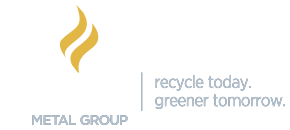The journey of India’s non-ferrous metal recycling industry has been one of remarkable growth and transformation over the last few decades. I became involved in the industry in the late 1990s, a time when recycling in India was still in its infancy and largely reliant on primary metals. The opening up of scrap imports in 1996 brought a pivotal shift, making it possible to source materials from the Middle East, Europe, and the United States. This change not only reduced the cost of non-ferrous metals but also set the stage for the rapid expansion of the recycling industry as India’s automotive sector surged and manufacturers sought out lighter materials like aluminum. This demand made aluminum recycling a significant part of the landscape, laying the groundwork for the journey that followed.
Evolution of Scrap Import and Processing Technologies
In those early days, the industry was heavily depended on manual processes to prepare metal scrap for melting. This limited the types of scrap that could be efficiently processed. For instance, aluminum scrap in the form of automotive parts and sheet scrap was preferred, as it was simpler to handle manually. However, more complex scrap, like Zorba (a mix of shredded aluminum with metallic and non-metallic impurities from automotive sources), was less common in India due to the challenges posed by manual handling.
The turning point came in the late 2000s when automatic and semi-automatic scrap processing technologies were introduced. By 2010, India began incorporating mechanical processes like shredding, sorting, baling, and cutting, which enabled a much broader range of imported scrap to be processed efficiently. Around this time, we at Jain Metal Group established large-scale automatic plants, including one of South East Asia’s largest cable recycling plants, complete with integrated melting capabilities.
Advanced electronic sorting technologies, including color and X-ray sorting, emerged in the mid-2010s, making pre-scrap processing more effective and streamlined. Organized recycling grew rapidly, and with industrial expansion, domestic scrap generation also rose significantly. However, end-of-life scrap, often part of the gray market, still tends to flow towards unorganized recyclers due to tax evasion practices—a challenge that the organized sector has continually faced.
The global landscape changed drastically in 2017 when China imposed restrictions on “dirty scrap,” shaking up the global scrap trade. India became a new hub for various types of metal scrap recycling, including Zurik, motor scrap, cable scrap, and more. As the recycling sector adapted, Jain Metal Group’s facilities became integral to handling these new materials, setting standards for technology and efficiency in the field.
Evolution of Melting Technologies
In the early 1990s, the industry used small-scale melting furnaces, with capacities rarely exceeding three tons. Each metal had its furnace type, from rotary furnaces for aluminum to Super D furnaces for copper. As the 2000s progressed, we began focusing on optimizing melting technologies for greater efficiency and quality. In aluminum recycling, for example, we introduced dry hearth and sidewell furnaces, which significantly improved the melting process. For lead, rotary furnaces with oxygen-aided firing systems became standard, while in copper, induction and high-end gas-fired furnaces took precedence, allowing for precise melting and refining.
Awareness about Environmental Control Systems
With environmental regulations becoming more stringent, the recycling industry has made significant strides in pollution control. By the early 2000s, the implementation of baghouses for air pollution control and closed-loop water systems became widespread in organized facilities. At Jain Metal Group, we phased out salt usage in rotary furnaces to reduce solid waste, reflecting a commitment to reducing environmental impact. The industry today is more conscientious than ever about implementing proactive measures to meet environmental standards.
The Present and Future: Aiming for $1 Billion
Today, as the Group Managing Director of Jain Metal Group, my vision is to continue driving operational efficiency, investing in cutting-edge technology, and expanding into new regions and products. With a target of reaching a $1 billion turnover in the next five years, we aim to further position India as a key player in global recycling. The International Aluminium Institute projects that global demand for recycled aluminum will rise by over 30% by 2030, providing an immense opportunity for the industry.
Reflecting on Three Decades
Looking back, it’s clear that the industry has transformed significantly. From small-scale manual sorting to advanced automated processes, we’ve witnessed and contributed to the modernization of non-ferrous metal recycling in India. The journey has not been without its challenges, but it has been a privilege to contribute to setting industry benchmarks. As we move forward, I am committed to fostering sustainability, innovation, and efficiency—laying the foundation for the next generation of recycling practices in India.

